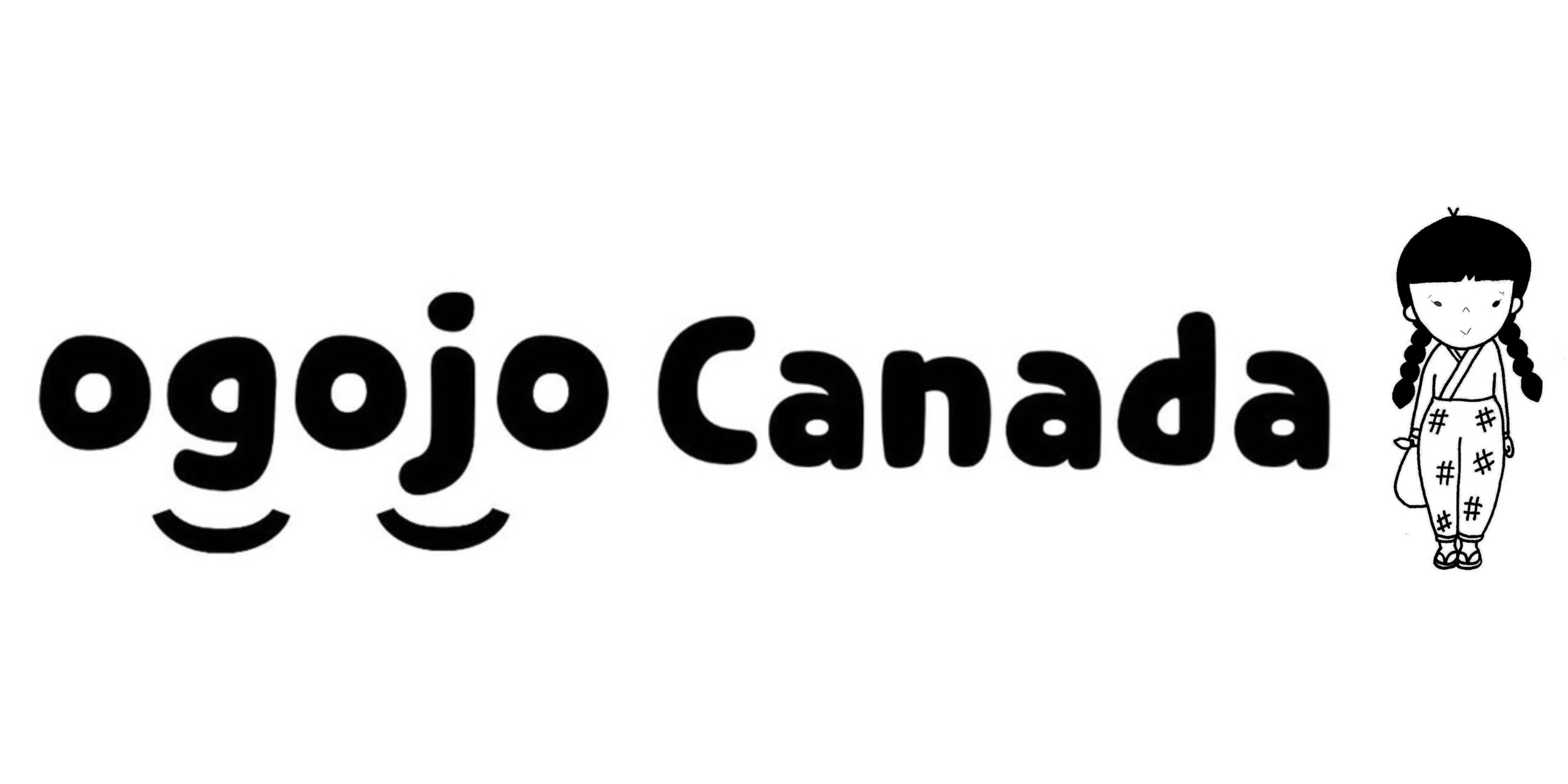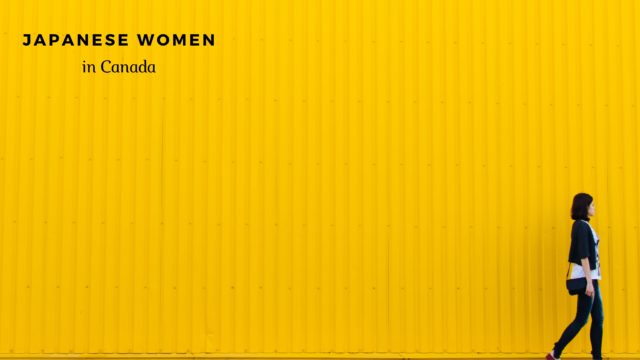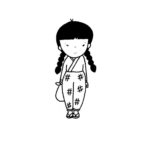- What do you like about Canada?
- How long have you lived in Canada? Tell us why you came here.
- What have you done since you came here?
- Please tell us about your ceramic art.
- Please tell us about aikido.
- Please tell us about the tea ceremony.
- What do you do now?
- You are working in a completely different field from your career in Japan. How is it?
- What do you think about inclusive education in Japan and Canada?
- What do you like to do?
- Is there anything you like to do in the future?
- How was enrolling in college immediately after arriving in Canada and obtaining a diploma?
- Finally, do you have a message for those who have moved to Canada to raise their children or are planning to move to Canada?
- Editorial Postscript
What do you like about Canada?
I like the openness and friendliness of the country, not too much interference with other people, because it makes life easy. There are a lot of people who have moved here from the East Coast and many other places, so I feel accepted. Little by little I make friends and get to know more Japanese people that helps me feel comfortable. Also, Victoria is a small town surrounded by beautiful beaches and has a lot of nature. I like the atmosphere that feels like home in Victoria.

How long have you lived in Canada? Tell us why you came here.
I moved to Victoria with my husband and my son from Japan in 2012. My son was only two and a half years old. I was a pottery instructor in Japan and I once organized a workshop with a ceramic artist from Finland. At that time, I couldn’t speak much English and couldn’t have a smooth communication with them, so I started learning to speak English. I chose Victoria because my teacher at that time lived on Vancouver Island and I fell in love with it when I visited him and his family.

What have you done since you came here?
I attended Camosun College for two years and completed a diploma in early childhood education. I went to school as soon as I arrived because I wasn’t sure if I would be able to find a job easily. I chose early childhood education because it would help me raise my children and because there is a shortage of staff in early childhood education, but now I feel it is my vocation. I also make and sell my own ceramics, teach pottery classes, learn aikido and tea ceremony, and spend busy but fulfilling days.

Please tell us about your ceramic art.
I worked for a travel agency in Japan, but when I moved to Hokkaido, I decided to try something I had never done before and started doing pottery. I decided I wanted to take it seriously and spent two years as a trainee at an Industrial Research Institute in Ebetsu City, Hokkaido. Ebetsu City is a thriving pottery area and I worked as an instructor at the Ceramic Art Centre.
Before the pandemic started, I looked for a pottery studio and they also had pottery classes, so I have been an instructor from time to time. I decided to make my own artwork when the studio was shut down due to the pandemic. Now a corner of my house is also my studio. That pottery studio also has a gallery, so I have my work sold there. I use porcelain because I think it is suitable to show my designs on porcelain, but I would like to try making ceramics using black clay.
Thankfully, I have started to receive orders. There are so many things I want to do, but I can only do so much in a limited amount of time. I want to strike a balance between my full time job and the ceramic work. My goal for this year is to make teapots.

Emi’s Pottery Shop


Please tell us about aikido.
The group is made up of people who like Japanese martial arts, so there is a sense of respect for Japanese culture and it was easy to feel comfortable and part of a community. I thought it was interesting to see the progression of kyu levels and I liked the fact that there are no matches. Aikido is about harmony, not fighting. Aikido is a martial art where you have to harmonize with your partner, and you have to improve each other. Going once or twice a week is a good stimulus for my body. Early childhood education is a physically demanding job, so it is necessary for me to maintain my health, and pottery is a lesson that helps prevent back pain, as many people suffer from back pain. It suits my lifestyle. In Aikido, you press on pressure points and pin down while pressing, and I was surprised to learn later that the pressure points are good for the body.

Please tell us about the tea ceremony.
The tea ceremony also has a strong connection with ceramics. After I moved to Victoria, I started learning it because I thought it would be a good way to learn how to design and make ceramics. It was an opportunity to remind myself of my ceramic identity by being exposed to the way the culture of ceramics has been valued in Japanese culture. Learning tea ceremony and using Japanese Chawan has also had a big influence on my pottery designs, such as trying to incorporate traditional Japanese patterns. I also learn a lot from thinking about what kind of design would make wagashi look good on it.

What do you do now?
I work full time in a daycare. Canada is an inclusive care country, so children with special needs are in the same class. I am a support worker and mainly look after the children with special needs. I have to be resourceful at all times. I use American Sign Language, visual cards, and touch-panel talker App, as sometimes it is hard for those children to understand with English alone. We help the children increase their ways of communication as well as ours, so that we can communicate with each other. We use a variety of languages, media and materials to support the child in broadening his/her range and deepening his/her understanding and communication. We do this through trial and error, thinking about how we can support the child to learn things with joy and live their daily life successfully.

You are working in a completely different field from your career in Japan. How is it?
I find my current job very rewarding. I like music and used to play the violin, so I can play the ukulele and sing along with relative ease. Flexibility is encouraged and classes are flexible to suit the different needs of the children. I try to sing a lot of kid’s songs in the program and by singing songs, the children can develop a sense of sound, promote pronunciation and learn new words and phrases. Singing songs in rhythm and melody is very effective for language acquisition.
The children also like to play with the clay I bring. It is not harmful to their mouths and can be used in baby classes. During the pandemic period, Play-Doh was not available, but the children could play with the clay because it cleans itself. If you leave it on the table, it dries out and becomes hard, but it can be put in water again and reused. It is a natural environmentally friendly tool.
Both of these jobs allow me to utilize the skills I have been working with, and I believe that the work I am doing now is my true calling.

What do you think about inclusive education in Japan and Canada?
I didn’t work as an educator in Japan, so I don’t know what the situation is like now, but when I was a student, there wasn’t much focus on making it easier for children with special needs in their choice of school besides there were special support classes in some schools. I think that when there is a bit more support, more recognition and more flexibility, I am sure that there will be a way of education that will make children with different needs happier. In Canada, the children with special needs can learn in the regular class and having diversity is normal. People in Canada come from different backgrounds, races and countries. I think that the fact that they want to live together while respecting each other is also reflected in their education.
In Canada, until high school, school systems are rather relaxed, and I feel that the students can enjoy their student life because they are free and laid-back. However, after going to college or university, it seems like it is an environment where you have to work very hard.

What do you like to do?
Aikido requires me to move my body and maintain it. Tea ceremony is a Japanese moment of relaxation with mental treatment for me.
There is something in common with the tea ceremony and aikido, which I like. The Sensei tells me to leave all the troubles of everyday life at the door. Once you step in the dojo or the room, you are in a different space. Switch your mind off and concentrate on where you are and what you are doing right now. I am busy and there are many things going on, but I leave them behind and now I can be just myself practicing aikido or serving/practicing tea ceremony, so it is a mental self-cleansing process. I can be my true self.
In aikido it’s also good to be able to throw people or be thrown. There are techniques that we pin the other down by pressing pressure points, and although it hurts a bit when they press the pressure points, I hear that it is good for the body. Rolling forward and backward in ukemi also stimulates the pressure points too, and the more you do it, the healthier you become. Tightening the obi on the kimono also tightens the mind and improves posture. Also, by continuing to do it, you can raise your grade level and that is a visible Reward. Getting promoted to a higher grade is a great encouragement and boosts my self-esteem.
In the tea ceremony lesson, I also put an obi on my kimono, which straightens my back, and I can also make tea to unify my spirit. It is a time to relax and regain myself when I have beautiful Japanese wagashi sweets and matcha tea while enjoying conversation with my Sensei and fellow students in Sensei’s tea room once a week.

Is there anything you like to do in the future?
I started studying American Sign Language last fall. I am planning to keep taking ASL courses to improve my ASL so that I can support the children more. Also, I would like to manage my time to keep making pottery for the people who are waiting for my pieces.
In addition, I am interested in transferring to an ECE degree program at UVic which I can study online while working. There are so many options including part-time courses and there is an environment in Canada where you can study at College/University at any time, regardless of your age.
However, it is also very important for me to spend time with my family so my current goal is to maintain a good balance among my jobs, hobbies, and the family time.

How was enrolling in college immediately after arriving in Canada and obtaining a diploma?
I prepared for a year in Japan before entering college. I had studied English in Japan, and I was able to get a required IELTS score, so I was able to enter the College program right away, but I struggled to keep up with the speed of the class discussion and the different style of curriculum because it was my first experience of studying abroad. The College also offered support for ESL students and even created a one-column English support class. Some teachers would proofread my homework before I turned it in, and there was a support service called the English Support Centre, which was a library-like room with a resident teacher who would read over my assignments and correct grammatical errors and unnatural phrases, which I actively used. I think it is important to speak out that you need help.
Finally, do you have a message for those who have moved to Canada to raise their children or are planning to move to Canada?
I think it is really hard to raise a child alone, so I believe the key is to expand your community by interacting with people and exchanging information as much as possible. I sometimes see people who come to study abroad alone with their children and are having a hard time raising their children and studying. I think that if you can participate in various communities and create a network where you can help others while also helping yourself, you will be able to reduce the burden and anxiety of raising a child. You will also receive information about services that you would not otherwise receive if you didn’t know about them.
When I moved to Canada, I didn’t have any friends except for my Canadian friends from Japan who live a bit far from Victoria. So I joined a Japanese parenting group here. From there, I got connected to the Nikkei community and so on. We met several Japanese families who happened to immigrate here around the same time we immigrated. We graduated from college and applied for PR, groping in the dark and were able to overcome this hard time by exchanging information and encouraging each other. During the pandemic, I participated in online seminars and got to know so many Japanese people who live in different countries. I can do my best when I know that there are people abroad who are also working hard.
Fortunately, my circle of friends in the field and in communities my family and I belong to has also expanded and it is becoming more comfortable to spend time here. I am so grateful to have met such wonderful people, rewarding jobs, and a supportive community. I am glad that I took the plunge and came to Canada.

Emi’s Pottery Shop
Emi Yokogawa Pottery
Editorial Postscript
I fell in love with Emi’s work when I saw her Instagram and asked for an interview.
I had an image that “artists are sensitive,” but she was a powerful woman who attended school, obtained her credentials, and received work visa and became a permanent resident after moving to Canada with her two-year-old son and her husband. She would never have thought that early childhood education, which she studied to immigrate to Canada, would become her vocation. It is becoming the culmination of all the experience and knowledge she has accumulated over the years. Life is interesting.
Emi enjoys her busy life while keeping her mind and body in shape through aikido and tea ceremony. Just listening to her positive attitude, my mind clears as well. I think it shows in her work very well.
Emi is currently studying sign language and will start studying for her bachelor’s degree in Early Child Education in September while working full time. Her attitude of always enjoying challenges will be an encouragement to those who are planning to move to Canada and those who are not sure what to do after moving here.
I look forward to seeing what Emi will create in the future.











